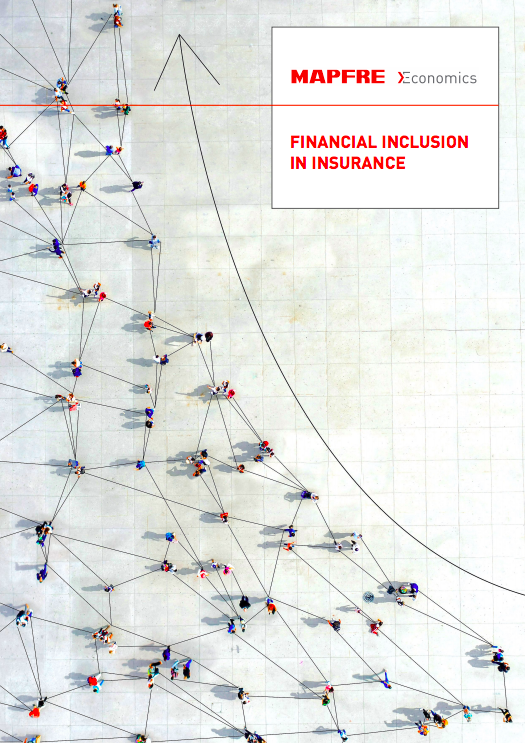Financial Inclusion in Insurance

EXECUTIVE SUMMARY
The concept of financial inclusion is the process through which a society has access to different financial services (credit, savings, insurance, payment and pension services), as well as financial education mechanisms, with the goal of improving its material conditions of well-being. In the case of insurance activity, financial inclusion focuses on allowing lower-income groups of society to gain access to the products that enable them to protect their life, health and assets, through the savings and loss compensation processes which are an inherent part of insurance products.
The process of financial inclusion in insurance has been implemented, in general, through three types of products: “group insurance,” “inclusive insurance,” and “microinsurance.” At the beginning of the 1990s, “microinsurance” began to be considered as a potential tool within the framework of different public programs and international bodies, as it tries to help improve the living conditions of the low-income groups to which it is geared. Without a doubt, “microinsurance” is a tool that can be used to protect the most economically vulnerable populations from unexpected costs due to the occurrence of an event which is able to be mutualized through insurance techniques. The fact that these institutions have included it as part of their agendas is increasing pressure on insurance companies to include it in their product offering.
In particular, two main factors can be identified that have influenced the development of microinsurance globally in recent years. The first is the willingness of public authorities to stimulate its growth as part of the design of specifically created public policies; and the second is technology, which can facilitate access to a broad group of potential policyholders (even in rural areas) at a reasonable cost.
From the analysis conducted in this report, it can be inferred that the future viability of microinsurance will depend largely on its ability to be supported by modern technological bases. Otherwise, most of the premium would need to be allocated to covering administration expenses, distribution costs, and prudential margins, which would only allocate a very small percentage of the premium to paying claims. This would prevent the insurance from fulfilling its risk mutualization and/or savings generation function; it would therefore not create value for microinsurance policyholders.
This report also highlights that IT platforms designed for the production and distribution of standardized mass-market products can support the viability of microinsurance. The aim is to take advantage of these technological platforms as much as possible in order to incorporate products into the offering with more suitable coverage for the low-income population, seeking the economies of scale that will allow these policies to be issued at a reasonable cost. The significant development of these web platforms or cellphone applications for financial services can considerably facilitate the distribution of microinsurance.
One notable case is the public initiative launched in India. In this market, microinsurance is sold through IT platforms called “Common Service Centers” (CSC), where financial services and other public and private services are also offered. The goal of these platforms (which make up the “CSC Network”) is to ensure reduced operating costs, transparent digital processes, and easy accessibility to products and services, even in rural areas. Likewise, these new technologies can be extremely useful for segmenting clients through the data they provide; facilitating the digital identification of policyholders; receiving, managing and paying claims (including automatic compensation based on indices); analyzing information; detecting fraud; and preventing and mitigating risks, among other things.
This report analyzes the main markets of Asia, Africa, Latin America and the Caribbean, which have large middle-to-low income populations— the target group of microinsurance. The analysis indicates that the environment for financial inclusion is improving at a global level, with Latin America leading the way in infrastructure and regulation. Colombia, Peru, Uruguay, Mexico and India are some of the most advanced countries. However, even in these countries, there is still a long way to go.
As for the segment of insurance markets relevant for this report, temporary term Life insurance is currently dominant in the microinsurance market. However, versions of Life savings insurance, property insurance, and agricultural insurance can also be found, as well as health microinsurance—one of the insurance products with the highest demand among low-income families, but also with the lowest levels of penetration and highest levels of complexity in terms of its implementation.
Finally, the study delves into the public policy measures that could be adopted, both from a supply and demand point of view, in order to promote financial inclusion through microinsurance, breaking down the barriers that curb its development.